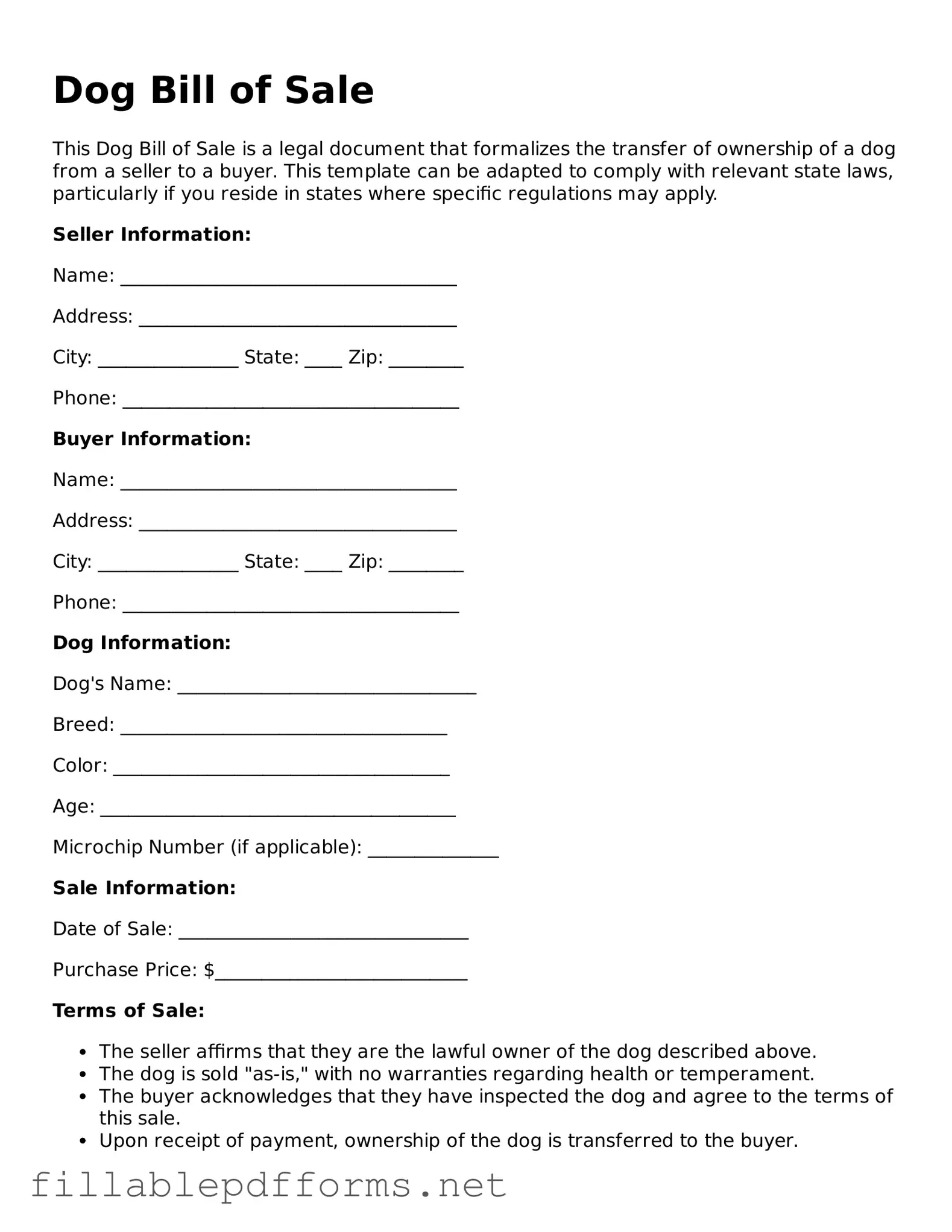Blank Dog Bill of Sale Template
A Dog Bill of Sale form is a legal document that records the transfer of ownership of a dog from one party to another. This form protects both the seller and the buyer by clearly outlining the terms of the sale, including details about the dog and any conditions of the transaction. Having a well-drafted bill of sale can help prevent disputes and ensure a smooth transition for the new pet owner.
Launch Editor Here
